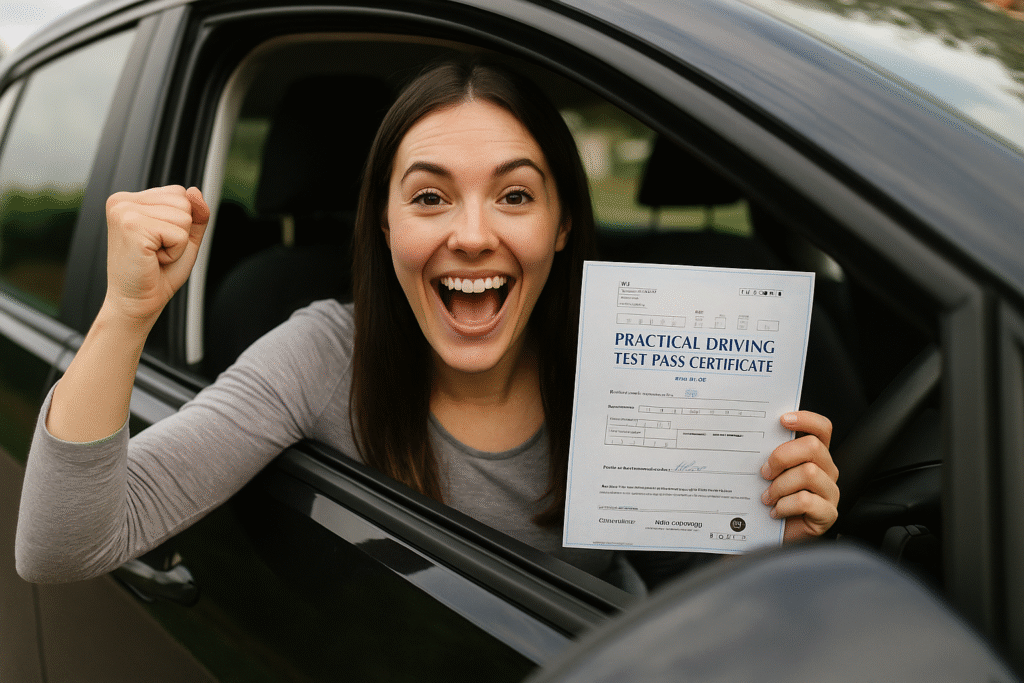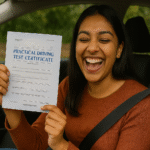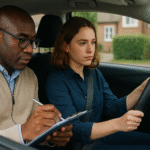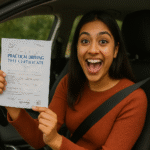How to Check Practical Driving Test Dates: A Step-by-Step Guide
Preparing for your practical driving test is an exciting time, but it starts with one crucial step: knowing when your test is scheduled. Here is a straightforward guide on how to check practical driving test dates. This will help you stay organized and plan your practice sessions effectively.
Understanding the Importance of Test Dates
Using the right driving test dates is essential for effective preparation. Here’s why tracking your practical test date matters:
- Time Management: Knowing your test date helps you to allocate sufficient time for practice.
- Reducing Anxiety: Having a set date can lessen the uncertainty and stress leading up to the test.
- Flexibility in Scheduling: If you know the date, you can plan around it, including arranging for time off work or prioritizing study time.
Step 1: Visit the Official Driving Test Website
The first step in checking practical driving test dates is to navigate to your country’s official driving test website. For instance, in the UK, you would visit the GOV.UK site. Here’s what you need to do:
- Open your preferred web browser.
- Type in the URL of the driving test authority’s website.
- Look for the section related to practical driving tests.
Step 2: Create or Log in to Your Account
If you haven’t done so already, you may need to create an account to access your driving test information. If you already have an account, just log in. Here’s how:
- Find the “Login” button and click it.
- Enter your credentials, such as your email and password.
- If you’ve forgotten your password, use the recovery option to reset it.
- For new users, fill out the required information to set up your account.
Step 3: Navigate to the Test Booking Section
Once logged in, locate the test booking area. Most websites have a clear pathway to help you find this section easily. Follow these steps:
- Look for a tab or menu that says “Book a Driving Test” or “Check Test Dates.”
- Click on the appropriate link to proceed.
Step 4: Check Available Dates
Next, you will be able to see available practical driving test dates. Keep an eye out for the following:
- Available dates will often be displayed in a calendar format.
- Some websites may allow you to filter dates based on your location or preferred time.
- Select a date that aligns with your practice schedule.
Step 5: Book Your Test
If you’re ready to secure your practical driving test date, ensure you’ve met the following conditions:
- You have completed any necessary training.
- You possess a valid provisional license.
- You are prepared to pay the booking fee, if applicable.
After confirmation, proceed with the booking process. Be prepared to input your personal details and payment information.
Alternative Methods to Check Test Dates
If you prefer not to use the website, you can also check your practical driving test dates by:
- Calling the driving test hotline in your region.
- Visiting your local driving test center in person.
Tips for Staying Updated
Staying informed about any changes in driving test dates is crucial. Here are some tips:
- Set reminders on your phone about test date checks.
- Consider subscribing to updates from the driving authority.
- Follow relevant social media pages for real-time announcements.
Checking practical driving test dates is a simple but vital task in your journey to becoming a skilled driver. By following these steps, you can easily locate your test date and prepare accordingly. Good luck with your upcoming test!
Essential Tips for Booking Your Driving Test
Booking your driving test can feel overwhelming, but with the right information and tips, you can streamline the process and increase your chances of success. Here are some essential strategies to help you book your driving test effectively.
Understand the Requirements
Before you even think about scheduling your test, make sure you understand the requirements set by your local driving authority. You usually need to meet the following conditions:
- Age requirement: Ensure you meet the minimum age for taking the test.
- Provisional license: You must have a valid provisional driving license.
- Previous lessons: Completing a certain number of driving lessons with a certified instructor may be necessary.
Know the Types of Tests Available
Understanding the types of driving tests available in your region can help you choose the right one. Generally, you may encounter:
- Practical Driving Test: This evaluates your driving skills on the road.
- Theory Test: A written or computer-based exam covering the rules of the road and traffic signs.
Check Availability Online
Most driving authorities have online portals that allow you to check test dates. Here’s how you can effectively navigate these platforms:
- Visit the official driving authority website for your region.
- Look for the “Book a Test” section, which is often clearly marked on the homepage.
- Enter your provisional license details to find available dates.
Timing Is Key
Finding the right balance between availability and your schedule is essential. Here are some timing tips:
- Peak Times: Avoid booking tests during busy months, such as summer, as spots fill quickly.
- Advance Booking: Consider booking your test well in advance to secure your preferred date and time.
- Cancellations: Frequently check for any cancellations that might open up earlier slots.
Prepare Your Documents
When you book your test, ensure you have all necessary documents ready. You will typically need:
- Your provisional driving license
- Payment details for the booking fee
- Evidence of previous driving lessons, if applicable
Stay Informed About Fees
Being aware of the fees associated with booking your driving test can prevent unexpected surprises:
- Check the cost of the driving test on your local driving authority’s site.
- Be aware of potential rescheduling or cancellation fees, which can vary significantly.
Use a Study Schedule
Once your test is booked, use a study schedule to prepare effectively. Here’s a straightforward approach:
| Study Day | Activity |
|---|---|
| Day 1 | Review the Highway Code. |
| Day 2 | Practice theory questions. |
| Day 3 | Take a mock driving test. |
| Day 4 | Identify personal weaknesses to work on. |
| Day 5 | Drive under different conditions – night, rain, etc. |
| Day 6 | Rest and reflect on your driving experience. |
Stay Calm and Positive
Nervousness before a driving test is common, but maintaining a positive mindset is crucial. You can employ techniques such as:
- Breathing exercises to reduce anxiety.
- Visualization techniques to imagine a successful test.
- Practice relaxation methods to keep calm on test day.
By following these essential tips, you can make the process of booking your driving test less daunting and set yourself up for success. Remember to stay organized, well-prepared, and positive as you take this significant step toward becoming a licensed driver.
Understanding the Practical Driving Test Process
Preparing for your practical driving test can be both exciting and nerve-wracking. Understanding the process is vital to boost your confidence and set you up for success. Here’s a breakdown of the practical driving test process that will help you navigate this essential milestone in becoming a licensed driver.
What to Expect on Test Day
On the day of your driving test, it’s crucial to arrive early and be prepared. You should have the following items with you:
- Your provisional driving license.
- Any necessary test booking confirmation details.
- A roadworthy vehicle, most likely your instructor’s car.
- A calm mindset and readiness to drive.
Upon arrival, you will check in at the test center. An examiner will then meet you to explain the process. They will also ask you to perform an eyesight check before you start your driving test.
The Structure of the Test
The practical driving test typically lasts about 40 minutes. Here is what you can expect during the test:
- Driving Ability Assessment: You will demonstrate your ability to control the vehicle, obey traffic regulations, and navigate various road types.
- Independent Driving: You will be asked to drive independently for about 20 minutes. This may involve following road signs or instructions from a navigation device.
- Vehicle Safety Questions: Before you start driving, the examiner may ask you to explain how to carry out certain checks on the vehicle, such as checking the oil level or the windscreen wipers.
Common Maneuvers During the Test
During your driving test, be prepared to perform specific maneuvers. The following are often tested:
- Reversing around a corner
- Parallel parking
- Emergency stop
- Bay parking
Practicing these maneuvers beforehand can significantly increase your chances of passing. Make sure to ask your instructor for additional tips and tricks to master them.
Understanding the Scoring System
The examiner will score you based on your performance during the test. Here’s a simplified breakdown of how scoring works:
| Fault Type | Description | Impact on Score |
|---|---|---|
| Minor Fault | These are small errors that do not pose a risk to safety. | Up to 15 minor faults are acceptable. |
| Major Fault | This is a serious error that could potentially cause danger to yourself or others on the road. | Any major fault will result in an automatic failure. |
| Serious Fault | A serious error or repeated minor faults can also lead to failure. | Any serious fault will result in an automatic failure. |
After the Test
After completing the practical driving test, the examiner will provide immediate feedback. If you pass, congratulations! You will receive your pass certificate, which allows you to apply for your full driving license. If you do not pass, you will receive a detailed explanation of your faults, which can help guide your future practice.
Don’t be discouraged if you don’t pass on your first attempt. Many people need more than one try to achieve their goal. Use the feedback you receive to improve your driving skills before scheduling another test.
Preparing for the Test
A key element for success is thorough preparation. Here are some tips to help you get ready:
- Take multiple lessons with a qualified driving instructor.
- Practice with a family member or friend who has a full license.
- Familiarize yourself with the driving test routes if possible.
- Study the theory behind safe driving practices.
By educating yourself about the driving test process and committing to practice, you will be better equipped to handle the challenges of your practical driving test. Remember, every driver was once in your shoes. Stay positive, and best of luck!
Common Mistakes to Avoid When Scheduling Your Driving Test
Scheduling your driving test can be a nerve-wracking experience. To ensure that you have the best chance of passing, it’s essential to avoid common mistakes when booking your test. Here are some pitfalls to steer clear of that could impact your driving test experience.
One of the first mistakes people often make is choosing a test date that is too soon. You may be feeling confident and want to advance quickly, but if you’re not adequately prepared, this can lead to failure. Assess your driving skills honestly and allow enough time for practice before the test.
Another common error is neglecting to check the location of your driving test. While it might seem straightforward, driving test centers can vary significantly. If you’re not familiar with the routes or the testing area, you might find yourself at a disadvantage. Make sure to practice driving in the area around the testing center to build your confidence and familiarity.
Failing to check the availability of your preferred test dates is also a mistake many make. Booking a driving test often depends on the availability of slots at the testing center. If you wait until the last minute, you might have to settle for a date that doesn’t work for you. Make use of online tools or call your local driving authority to get updates on availability.
It is crucial to consider the time of day when scheduling your test. For instance, early morning or late afternoon slots might be less busy than midday periods. Traffic conditions can greatly influence your driving performance, so aim for a time that suits your comfort level. This can reduce anxiety and provide a more rewarding experience.
Another significant oversight is not keeping proper documentation. Make sure you have all required documents sorted out well before your test date. This includes your learner’s permit, identification, and any appointment confirmation you might receive. Arriving at the test center without necessary paperwork can result in disqualification and wasted time.
A simple but often overlooked mistake is overlooking preparation along with scheduling. Think of the date as merely a formality if you haven’t practiced adequately. Make use of the time leading up to your test by taking lessons or practicing with a friend or family member. The more prepared you feel, the less stressed you will be when the day arrives.
Another mistake learners often make is not considering their mindset. Anxiety is common when facing a driving test, but an overly negative attitude can lead to poor performance. Take steps to focus your mind positively. Visualize the process, practice relaxation techniques, and remind yourself of the skills you’ve developed.
One issue that can lead to stress is failing to account for weather conditions. If you know a storm is expected on your test day, consider rescheduling. Weather can greatly affect road conditions and your ability to demonstrate your driving skills calmly. Being aware of the forecast before you schedule the test can save you from an unnecessary challenge.
Here’s a quick checklist of common mistakes to avoid:
- Scheduling your test date too soon
- Neglecting familiarity with the testing location
- Waiting too long to book your desired date
- Ignoring the impact of traffic at different times
- Not organizing necessary documents
- Lacking adequate preparation time
- Maintaining a negative mindset
- Overlooking weather conditions on test day
By being mindful of these common mistakes, you can set yourself up for success when scheduling your driving test. Take your time to plan every step, and approach the test with confidence and readiness to increase your chances of passing. The more proactive you are, the smoother the whole process will be, allowing you to focus on what truly matters—demonstrating your driving ability on the day of the test.
How to Prepare for Your Driving Test Once Dates Are Confirmed
Once you have confirmed your driving test dates, it’s time to start preparing effectively to ensure you pass with flying colors. The following steps will guide you through the necessary preparations to increase your chances of success.
First, make sure you understand the structure of the driving test itself. The driving test generally includes three key components:
- Theory Test: This assesses your understanding of driving rules and road signs.
- Hazard Perception Test: This involves video clips that require you to identify potential hazards on the road.
- Practical Driving Test: This portion tests your actual driving skills on the road.
Understanding these components will ensure you devote sufficient time and effort to each part of your test. The following tips will be beneficial as you prepare.
Begin by studying for the theory test. Familiarize yourself with the highway code, road signs, and regulations. You can access resources such as:
- Official Driving Test Apps: These apps often include mock tests and practice questions.
- Driving Books: Purchase books specifically aimed at helping learners prepare for the driving theory test.
- Online Courses: Many websites offer online courses aimed at preparing you for the theory test.
Next, practice the hazard perception portion. Understanding how to effectively identify hazards is crucial. You can improve your skills by:
- Watching Training Videos: Look for official training videos that illustrate hazard perception scenarios.
- Online Practice Tests: Use online resources that simulate the hazard perception environment.
- Discussing with Your Instructor: Ask for tips on what to look for during these scenarios.
When you feel prepared for the theory and hazard perception tests, shift your focus to the practical driving test. Here are some strategies to enhance your driving skills:
- Take a Mock Test: Schedule a practice driving test with your instructor to simulate real test conditions.
- Review Your Weak Areas: Focus on skills you find challenging, such as parallel parking or reversing around corners.
- Practice in Different Conditions: Drive at various times of the day and in different weather conditions to build your confidence.
It’s also essential to understand the vehicle you’ll be driving during the test. Make sure you:
- Become Familiar with the Controls: Know where everything is located, including indicators, windscreen wipers, and lights.
- Check Vehicle Readiness: Ensure the vehicle meets all necessary requirements, such as tire pressure, lights, and brakes.
Additionally, practice driving with someone who can provide constructive feedback, such as a trusted friend or family member. Ask them to keep a lookout for common test errors, and be open to their suggestions.
Managing test-day nerves is just as important as being technically prepared. Here are some tips to help you stay calm:
- Stay Rested: Ensure you get a good night’s sleep before the test day.
- Eat a Healthy Breakfast: Fuel your body with nutritious food to help maintain energy levels.
- Arrive Early: Give yourself enough time to get to the testing location without feeling rushed.
| Preparation Activity | Recommended Resources | Time Allocation |
|---|---|---|
| Theory Test Study | Driving apps, books, online courses | 1-2 weeks |
| Hazard Perception Practice | Training videos, practice tests | 1 week |
| Practical Driving Skills | Driving instructor, family | 2-3 weeks |
| Mock Driving Test | Driving instructor | 1-2 days |
By following these guidelines and dedicating adequate time to each aspect of your preparation, you will be better equipped for your driving test. Stay focused, practice diligently, and remember that confidence is key. Before you know it, you’ll be on your way to achieving your driving license.
Key Takeaway:
When it comes to checking practical driving test dates, preparation is key. This article highlights essential steps and tips that you should consider to ensure a smooth process from finding your test date to acing the exam itself.
First, understanding how to check practical driving test dates is crucial for every learner driver. By accessing your local driving authority’s official website or utilizing designated mobile applications, you can quickly find available test dates in your area. Familiarizing yourself with these resources will enable you to plan your schedule effectively and secure a date that aligns with your readiness to take the test.
Once you find the perfect date, your next focus should be on booking the driving test correctly. Essential tips such as double-checking the test center’s availability and confirming your personal details during the booking process are vital. Remember, any discrepancies can lead to delays or misunderstandings.
Understanding the practical driving test process is fundamental to your success. The article explains what to expect during the test, including driving maneuvers and safety checks. Gaining this knowledge allows you to feel more at ease and ready on test day.
Additionally, avoiding common mistakes when scheduling your driving test can save you from last-minute stress. For example, overlooking the requirement of adequate pre-test practice or failing to prepare necessary documents can thwart your efforts. Following the advice in this article can help mitigate these pitfalls.
Once your test dates are confirmed, effective preparation is the best strategy to ensure you perform well. This includes both behind-the-wheel practice and familiarizing yourself with driving test criteria. You want to arrive at the test location confident and well-prepared to demonstrate your driving skills.
The journey to passing your practical driving test is marked by thoughtful planning and effective preparation. By following this comprehensive guide, you can navigate the process seamlessly, avoid potential pitfalls, and increase your chances of success on the road.
Conclusion
Having a clear understanding of how to check practical driving test dates is essential for any learner driver eager to secure their opportunity on the road. Following the step-by-step guide laid out in this article ensures that you know exactly where to look and how to navigate the booking system with ease. With essential tips for scheduling your test, you can avoid overcrowded time slots and pick a date that fits well into your preparation schedule.
By familiarizing yourself with the practical driving test process, you can approach the exam with clarity and confidence. Knowing what to expect will reduce any anxiety and help you perform at your best. Moreover, avoiding common mistakes when scheduling your driving test is paramount; whether it’s overlooking the necessary documentation or failing to allow enough time for practice, being mindful of these pitfalls can make a significant difference.
Once your driving test date is confirmed, purposeful preparation is key. Use the time wisely to practice your driving skills and review essential road rules. Engaging in mock tests and refining your ability to handle different driving scenarios will boost your confidence and readiness.
Ultimately, your driving test is a significant step toward independence. By checking your dates effectively and preparing thoroughly, you place yourself in the best position for success. Remember, each step you take—whether it’s understanding the process, avoiding common errors, or honing your skills—brings you closer to obtaining that coveted driver’s license. Embrace the journey, and good luck with your driving test!






Leave a Reply